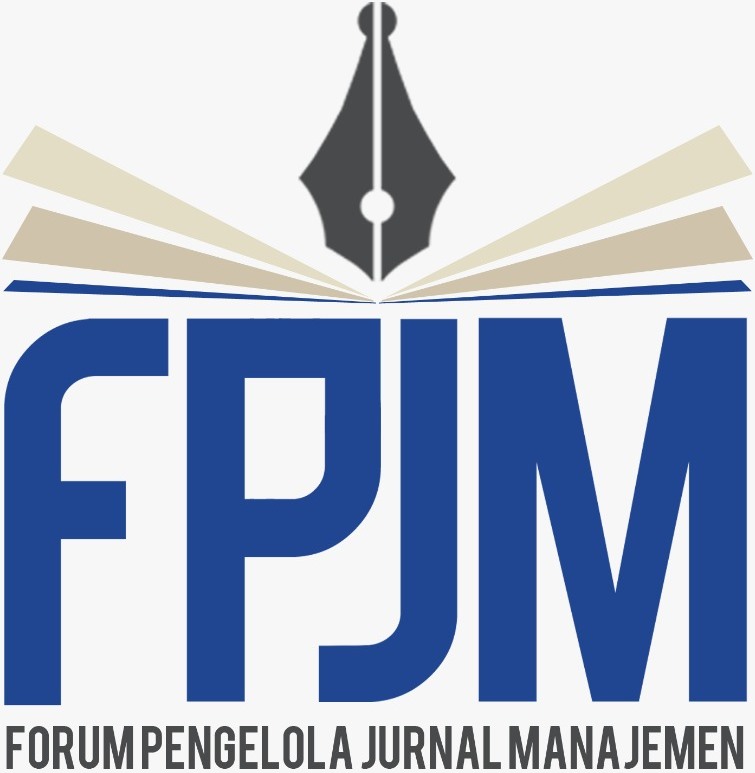INDONESIAN CONSUMER PREFERENCES IN SELECTING MASSIVE OPEN ONLINE COURSES (MOOCS): A CONJOINT ANALYSIS STUDY
Abstract
ABSTRACT
This paper attempts to measure and analyze consumer preferences when deciding to use massive open online courses (MOOCs). The research examines the challenges faced by Indonesian EdTech companies, particularly MOOCs, in offering diverse training sessions without considering the quality, substance, and efficiency of students' learning. This study employs descriptive quantitative research with a conjoint analysis approach to examine five key attributes: learning methods, teaching staff, prices, educational topics, and supporting services. The population is all Indonesian people aged 15–34, who are the target market of online course service providers. A total of 436 respondents were gathered by distributing online surveys. This study presents findings about the utility value and importance of the factors that influence consumer preferences. These findings reveal that price and topic are the primary factors influencing consumer preferences for online courses. It also shows the kinds of combinations of services and features that customers perceive to be important. This study contributes to the field of marketing, especially consumer preferences.
ABSTRAK
Penelitian ini bertujuan untuk mengukur dan menganalisis preferensi konsumen dalam menggunakan massive open online courses (MOOCs). Penelitian ini mengkaji tantangan yang dihadapi oleh perusahaan EdTech Indonesia, khususnya MOOCs, dalam menawarkan berbagai sesi pelatihan tanpa mempertimbangkan kualitas, substansi, dan efisiensi pembelajaran siswa. Studi ini menggunakan penelitian deskriptif kuantitatif dengan pendekatan analisis conjoint untuk meneliti lima atribut utama: metode pembelajaran, pengajar, harga, topik pendidikan, dan layanan pendukung. Populasi penelitian adalah masyarakat Indonesia berusia 15–34 tahun, yang merupakan target pasar penyedia layanan kursus online. Sebanyak 436 responden dikumpulkan melalui survei online. Hasil penelitian menunjukkan nilai utilitas dan pentingnya faktor-faktor yang memengaruhi preferensi konsumen. Temuan ini mengungkapkan bahwa harga dan topik merupakan faktor utama yang memengaruhi preferensi konsumen dalam memilih kursus online. Selain itu, penelitian ini menunjukkan kombinasi layanan dan fitur yang dianggap penting oleh pelanggan. Penelitian ini berkontribusi pada bidang pemasaran, khususnya preferensi konsumen.
Keywords
References
Al Basya, M. F. Y., Mawardi, M. K., & Nuralam, I. P. (2018). Analisis preferensi konsumen terhadap keputusan menggunakan jasa kursus bahasa inggris (studi pada pelanggan lembaga kursus bahasa inggris di kampung inggris pare). Jurnal Administrasi Bisnis, 58(2), 197–205.
Azzahra, Q. (2021). Ramai-ramai Berebut Pasar Pendidikan Digital. Alinea.Id. https://www.alinea.id/bisnis/ramai-ramai-berebut-pasar-pendidikan-digital
Bhardwaj, R., Yarrow, N., & Massimiliano, C. (2020). Edtech in Indonesia – Ready for Take-Off? World Bank Group.
BPS-Statistics Indonesia. (2021). Jumlah Penduduk Menurut Kelompok Umur dan Jenis Kelamin. https://www.bps.go.id/indikator/indikator/view_data_pub/0000/api_pub/YW40a21pdTU1cnJxOGt6dm43ZEdoZz09/da_03/1
Data Bridge Market Research. (2022). Asia-Pacific Massive Open Online Courses (MOOCS) market size by 2029. https://www.databridgemarketresearch.com/reports/asia-pacific-mooc-market
Haba, H., & Dastane, O. (2019). Massive Open Online Courses (MOOCs) – Understanding online learners’ preferences and experiences. International Journal of Learning, Teaching and Educational Research, 18(8), 109–128. https://doi.org/10.26803/ijlter.18.8.14
Ibrahim, M. Z., Rahman, M. N. A., & Yasin, R. M. (2014). Determining factors of students’ satisfaction with Malaysian skills training institutes. International Education Studies, 7(6), 9–24. https://doi.org/10.5539/ies.v7n6p9
Kotler, P., & Keller, K. L. (2016). Marketing Management, 15th edition (15th editi). Pearson Education, Inc.
Kuzmanović, M., Labrović, J. A., & Nikodijević, A. (2019). Designing E-learning environment based on student preferences: Conjoint analysis approach. International Journal of Cognitive Research in Science, Engineering and Education, 7(3), 37–47. https://doi.org/10.5937/IJCRSEE1903037K
Ma, L., Pahlevan Sharif, S., & Khong, K. W. (2022). What factors drive the purchase of paid online courses? A systematic literature review. Journal of Marketing for Higher Education, 34(1), 1–24. https://doi.org/10.1080/08841241.2022.2101172
Malhotra, N. K., & Dash, S. (2010). Marketing research applied orientation. Pearson India Education.
McDaniel, C. J., & Gates, R. (2013). Marketing Research, 9th Edition. John Wiley & Sons.
Nazari, M., & Elahi, M. (2011). A Study of consumer preferences for higher education institutes in tehran through conjoint analysis. Journal of Management Research, 4(1). https://doi.org/10.5296/jmr.v4i1.1082
Oleshko, M., Kostrova, A., & Lisyukov, R. (2020). Value dimensions in the reviews of the MOOCs students. In M. Auer & T. Tsiatsos (Eds.), The challenges of the digital transformation in education (pp. 101–110). Springer. https://doi.org/10.1007/978-3-030-65218-0_10
Ong, A. K. S., Prasetyo, Y. T., Young, M. N., Diaz, J. F. T., Chuenyindee, T., Kusonwattana, P., Yuduang, N., Nadlifatin, R., & Redi, A. A. N. P. (2021). Students’ preference analysis on online learning attributes in industrial engineering education during the COVID-19 pandemic: A conjoint analysis approach for sustainable industrial engineers. Sustainability (Switzerland), 13(15). https://doi.org/10.3390/su13158339
Putri, N. E., & Iskandar, D. (2014). Analisis preferensi konsumen dalam penggunaan social messenger di Kota Bandung tahun 2014 (studi kasus: line, kakaotalk, wechat, whatsapp). Jurnal Manajemen Indonesia, 14(2), 110–119. https://doi.org/10.25124/jmi.v14i2.356
Shrivastava, A., & Shrivastava, A. (2023). Decoding and designing massive open online courses (MOOCs). Interactive Technology and Smart Education, 20(1), 89-105. https://doi.org/10.1108/ITSE-08-2021-0146
Srivastava, S. (2022). What do vcs look for in an edtech solution? Appinventiv. https://appinventiv.com/blog/why-top-vcs-are-investing-in-edtech/
Supandi, E. D. (2012). Pendekatan conjoint analysis untuk mengukur tingkat preferensi mahasiswa terhadap layanan sistem informasi akademik di Uin Yogyakarta. Jurnal Fourier, 1(1), 1. https://doi.org/10.14421/fourier.2012.11.1-9.
DOI: 10.34203/jimfe.v11i1.10838
Refbacks
- There are currently no refbacks.
Copyright (c) 2025 The Author(s)

This work is licensed under a Creative Commons Attribution-NonCommercial-ShareAlike 4.0 International License.











